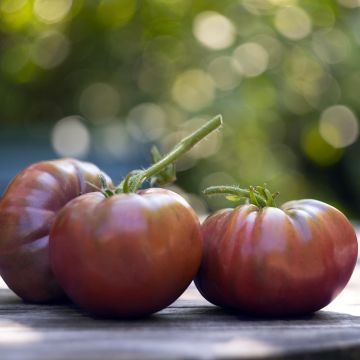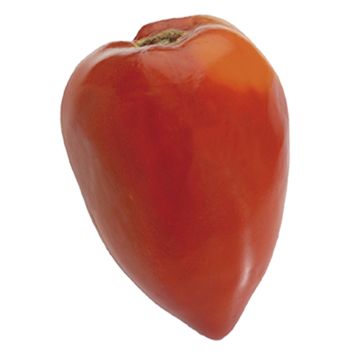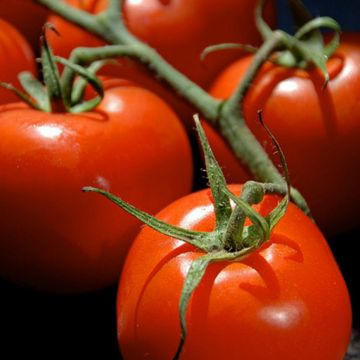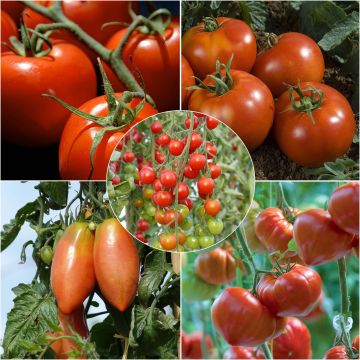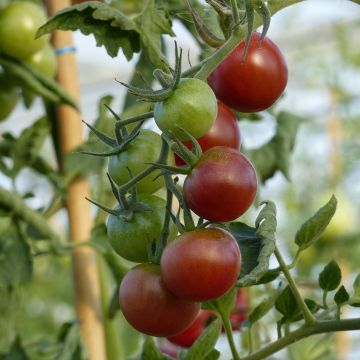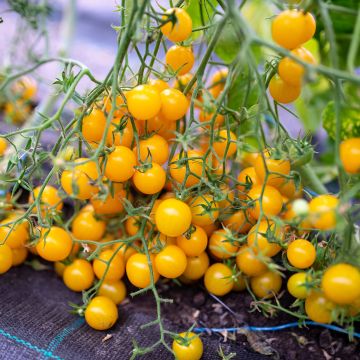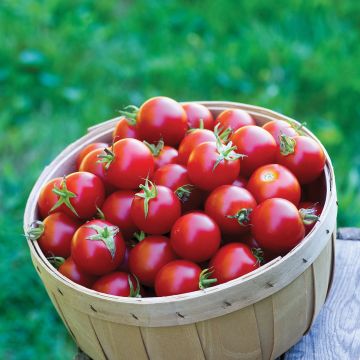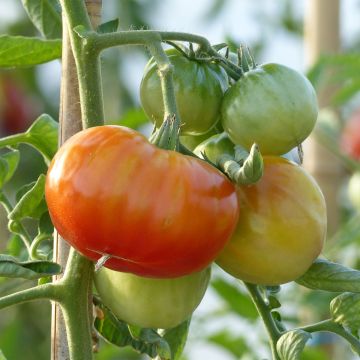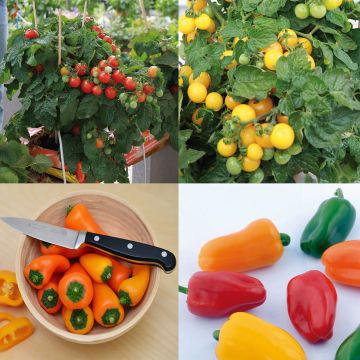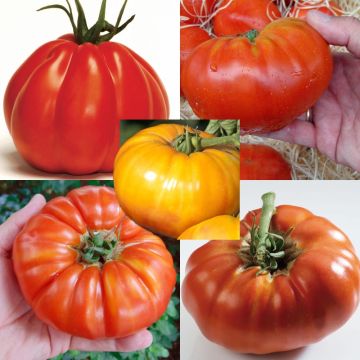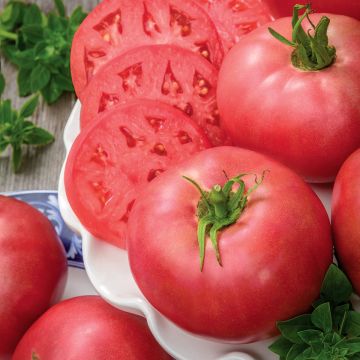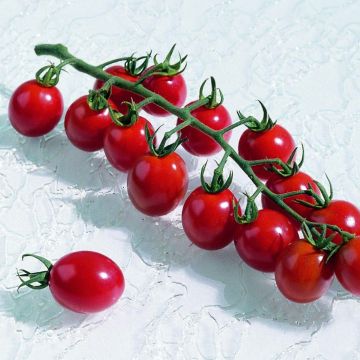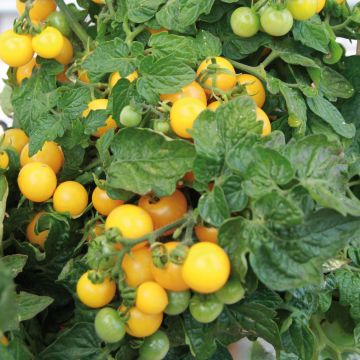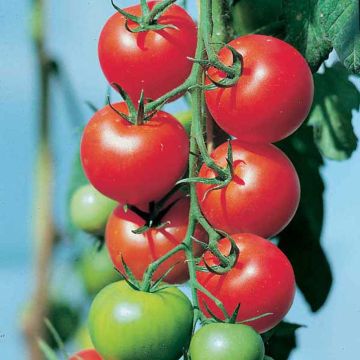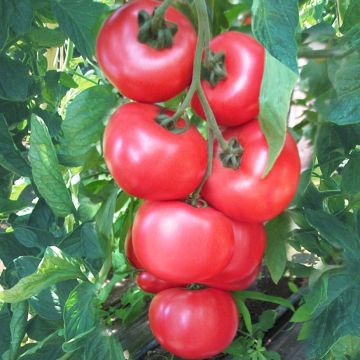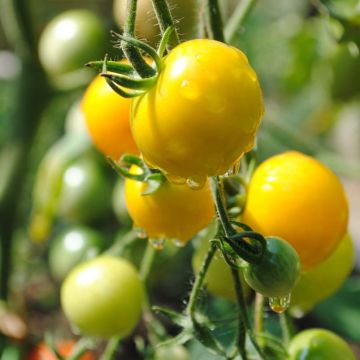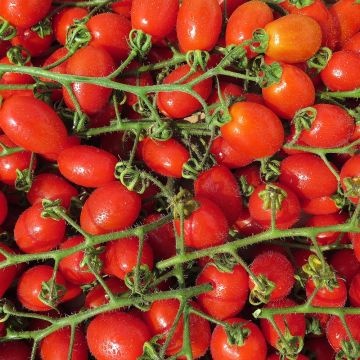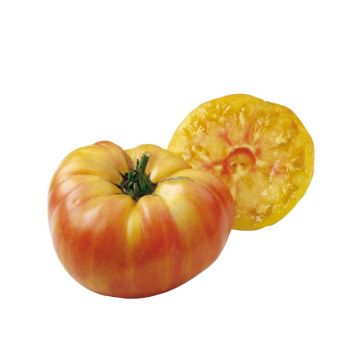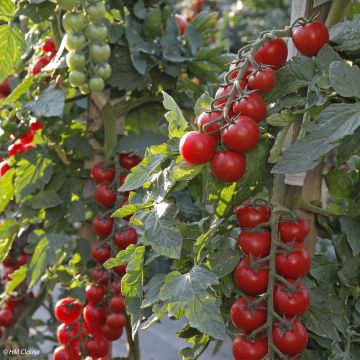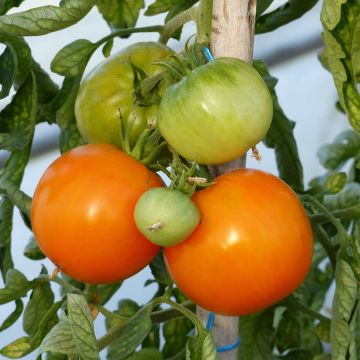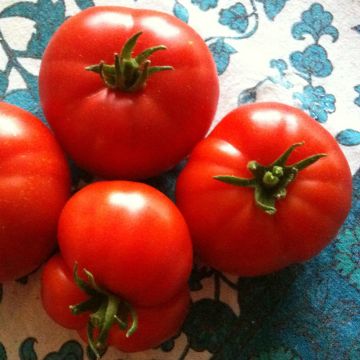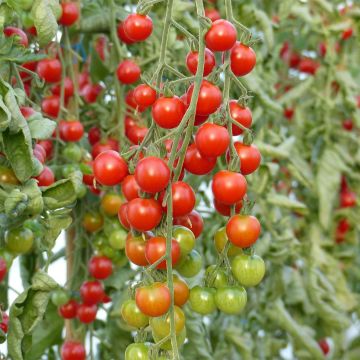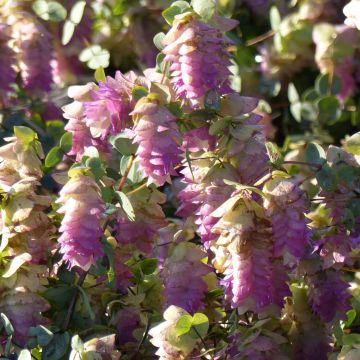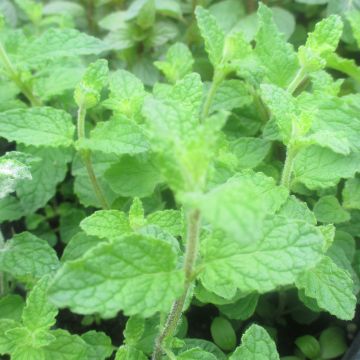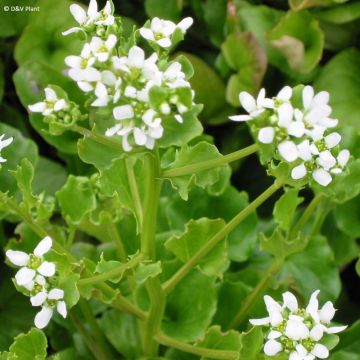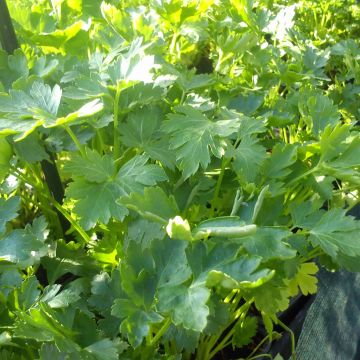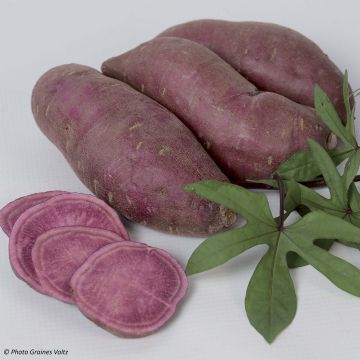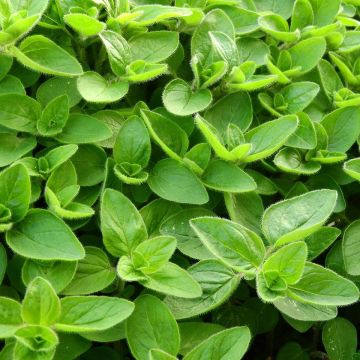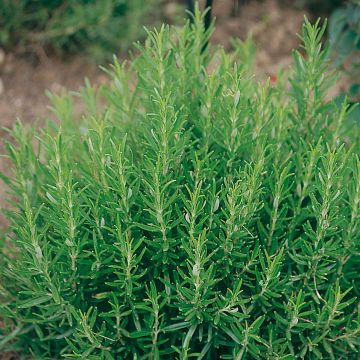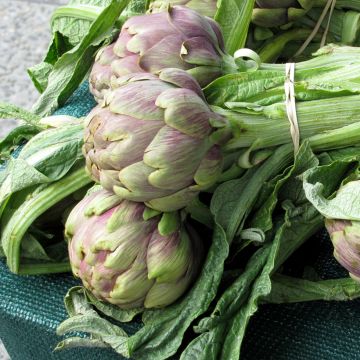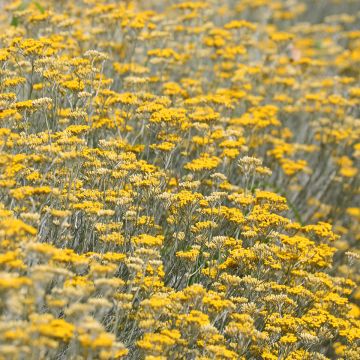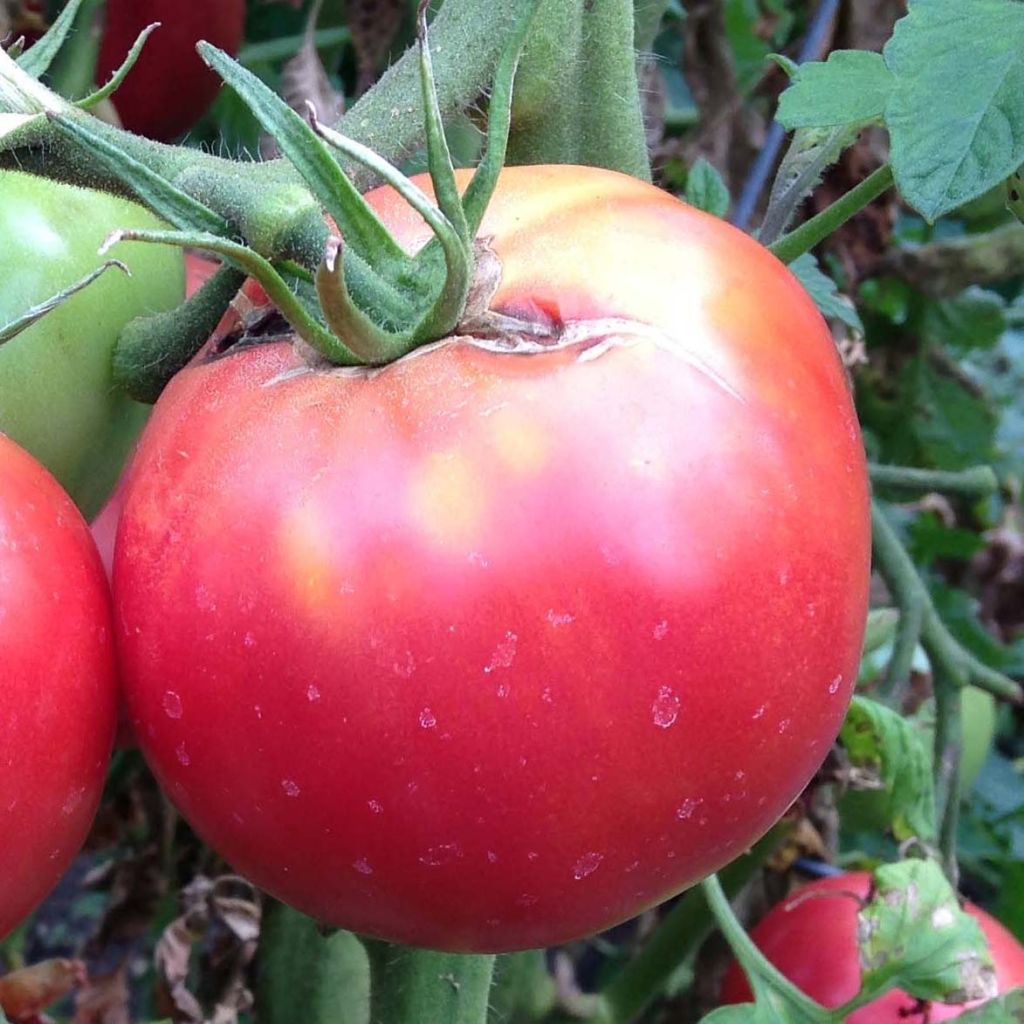

Tomato Crimson Crush GRAFTED plants
Tomato Crimson Crush GRAFTED plants
Solanum lycopersicum Rose Crush
Tomato
j'ai acheté 2 pieds de Tomates greffées Rose Crush conseillé par le magasin ,j'en suis très satisfait , la qualité du fruit mais la grosseur des tomates et la quantité la plus grosse à pesée 750 gr!!!, vraiment la Rose Crush elle est FOR MI DA BLE ,je n'exagère pas. Du fait qu'elle ne s'arrête pas de pousser j'ai allongé un bambou à l'horizontal sur lequel elle a déjà poussée environ 1,5mètre; elle fleurie toujours Quand j'ai démarré la plantation j'ai fait 2 branches c'est l'abondance de tomates on se régale de salades et on en donne .je vous signale qu' il n'y a aucun engrais chimique ni aucun traitement, juste un petite poignée de corne broyée ,des herbes broyées et du composte de cuisine. Enfin cette année j' ai réussi mes tomates ,je ne suis qu'un amateur !!! je vais essayer de vous joindre une photo à se jour sa fait deux mois qu'on mange ces tomates. Si je prend le temps de faire ces 7/8 lignes c'est parce que j'en suis très satisfait et que cette catégorie de tomates le mérite.
Jean Claude, 20/08/2022
Why not try an alternative variety in stock?
View all →This plant carries a 6 months recovery warranty
More information
We guarantee the quality of our plants for a full growing cycle, and will replace at our expense any plant that fails to recover under normal climatic and planting conditions.
From €5.90 for pickup delivery and €6.90 for home delivery
Express home delivery from €8.90.
Description
The Rose Crush Tomato is a recent variety of the Rose de Berne type, semi-early, exceptionally resistant to blight. It produces large round fruits with pink skin, each weighing 200 to 250 grams, appreciated for their slightly sweet pink flesh. The vigorous plants, with indeterminate growth, can reach up to 2m (7ft) in good conditions. With their bushy habit, they are suitable for both outdoor and balcony container cultivation. The Rose Crush can be enjoyed raw in summer salads or cooked in dishes. Young grafted plants should be planted from April to June, depending on the climate, after the last frost. Harvest from July to October.
The grafting technique consists of giving a desired variety (here 'Rose Crush') the root system of another specially selected variety, called a rootstock. This rootstock has excellent resistance to soil parasites and diseases, which provides the plant with extra vigour: it is then more resistant to difficult external conditions (such as cold climates) and will yield significantly higher than a non-grafted plant. The fruiting of grafted plants starts earlier and lower on the main stem. Thanks to the use of the 'Protector' rootstock, our grafted tomato plants also produce fewer leaves, for easier ripening and harvesting.
The tomato is native to South America and Central America. Several varieties were already cultivated by the Incas long before the arrival of the Conquistadors. We are still amazed by the genetic diversity of this Solanaceae. The term 'tomato' comes from the Inca Tomatl and refers to both the plant and the fruit it produces. There are fruits of all colours, except perhaps blue, of all shapes and sizes.
The tomato is one of many foods that came to us from the New World, like beans, corn, squash, potatoes, and chili peppers. It took significantly longer for it to reach our taste buds. For a long time, it was cultivated for its aesthetic and medicinal qualities. It was thought to be toxic because of its resemblance to the fruit of the Mandrake, another Solanaceae. It only became a regular on our tables from the beginning of the 20th century.
The tomato plant is a perennial herbaceous plant in tropical climates, cultivated as an annual in our latitudes. It lignifies over time and produces small inconspicuous yellow flowers grouped in clusters that will turn into fruits. It is a heat-demanding plant and requires rich soil.
It must be admitted that its fruit is very attractive and adds a pleasant colour to the vegetable garden. It also has many nutritional advantages. Low in calories like most vegetables, rich in water, it contains a particularly interesting molecule: lycopene, a powerful antioxidant. And the longer the tomato is cooked, the more lycopene becomes available. It is also rich in vitamin C, provitamin A, and trace elements.
Harvest: 'Rose Crush' is a semi-early variety, it can produce fruit from late June-July to October depending on the planting date and climatic and cultivation conditions (under cover or outdoors). There is no foolproof way to determine when a tomato has reached full ripeness a priori. Harvesting should be done when, at a minimum, it is fully coloured as announced and when its texture, while still firm, shows slight softening. For better storage, you should pick the fruit with its peduncle.
Storage: tomatoes should be stored at an optimal temperature of 10-15°C (50-59°F). They will keep well for a few days in the vegetable drawer of your refrigerator or spread out in the open air. However, refrigeration alters the taste qualities of the fruits. To keep them longer, consider culinary methods such as tomato confit, sun-dried tomatoes, sauces, frozen fruits, preserves, jams, or juices. We love confit tomatoes because it is so simple and delicious: cut your tomatoes in half and collect the juice. Place your tomato halves face up on the grill pan of your oven. Season with salt, pepper, and sugar, then bake at a very low temperature for at least an hour. Remove your tomatoes and consume immediately or store them in a glass jar and cover with olive oil.
Gardener's tip: it is recommended to cultivate several varieties of tomatoes each year to minimize the risk of complete crop loss due to climate or specific pathologies. To counteract the phenomenon of 'blossom end rot' - not a disease but a calcium deficiency - spray a comfrey maceration rich in calcium on your plants.
Attention: When transplanting grafted plants, do not bury the graft point!
Report an error about the product description
Harvest
Plant habit
Foliage
Other Tomato plants
Planting and care
Tomato plants are easy to grow. Sunlight and heat play a crucial role in the success of this cultivation. Tomatoes thrive in rich, well-drained soils that are deeply cultivated. A few months before planting, add mature compost after loosening the soil. If your soil is heavy, add some sand at the time of planting.
Initially, allow the plug plants to grow by transplanting them into 8 to 10.5 cm (3 to 4in) buckets filled with compost. Place them in a sunny and warm location, ensuring that the temperature never drops below 12-14°C (53.6-57.2°F), as this can cause the foliage to turn yellow and stunt the plant's growth. Once the plants reach a height of about 15 cm (6in), transplant them into the ground if the outdoor temperatures allow.
Planting in the ground should be done once the risk of frost has passed, usually after the Ice Saints in mid-May. Choose a sunny and sheltered location. Space the plants 50 cm (20in) apart in rows and 70 cm (28in) between rows if you prune them, or 1m (0 or 3ft) in all directions for unpruned cultivation. Dig a hole (3 times the volume of the plug plant), add some well-decomposed compost to the bottom of the hole. Place your plant, burying it up to the first leaves, then backfill. Firm the soil, create a basin around the base and water generously. Be careful not to wet the leaves to protect your plants from fungal diseases.
Install stakes (shortly after planting to avoid damaging the roots). Mulch around the base of the plants. Water regularly as irregular watering can lead to calcium deficiency, resulting in a condition known as 'blossom end rot'.
Furthermore, tomatoes, like potatoes, are susceptible to blight. This is a fungal disease caused by the Phytophthora infestans fungus. Blight develops in warm and humid weather. Small spots appear, white on the undersides of leaves and green-gray on top. To reduce the risk, space the plants adequately and avoid watering the foliage. In terms of crop rotation, wait 4 years before growing another plant from the Solanaceae family in the same location and do not cultivate them in neighboring rows. If necessary, spray with Bordeaux mixture or preparations such as horsetail decoction or garlic spray.
Less common, tomato cultivation in pots is still possible by choosing varieties with small fruits and placing the pot in a sunny location.
Cultivation
Care
Intended location
-
, onOrder confirmed
Reply from on Promesse de fleurs
Vegetable plants
Haven't found what you were looking for?
Hardiness is the lowest winter temperature a plant can endure without suffering serious damage or even dying. However, hardiness is affected by location (a sheltered area, such as a patio), protection (winter cover) and soil type (hardiness is improved by well-drained soil).

Photo Sharing Terms & Conditions
In order to encourage gardeners to interact and share their experiences, Promesse de fleurs offers various media enabling content to be uploaded onto its Site - in particular via the ‘Photo sharing’ module.
The User agrees to refrain from:
- Posting any content that is illegal, prejudicial, insulting, racist, inciteful to hatred, revisionist, contrary to public decency, that infringes on privacy or on the privacy rights of third parties, in particular the publicity rights of persons and goods, intellectual property rights, or the right to privacy.
- Submitting content on behalf of a third party;
- Impersonate the identity of a third party and/or publish any personal information about a third party;
In general, the User undertakes to refrain from any unethical behaviour.
All Content (in particular text, comments, files, images, photos, videos, creative works, etc.), which may be subject to property or intellectual property rights, image or other private rights, shall remain the property of the User, subject to the limited rights granted by the terms of the licence granted by Promesse de fleurs as stated below. Users are at liberty to publish or not to publish such Content on the Site, notably via the ‘Photo Sharing’ facility, and accept that this Content shall be made public and freely accessible, notably on the Internet.
Users further acknowledge, undertake to have ,and guarantee that they hold all necessary rights and permissions to publish such material on the Site, in particular with regard to the legislation in force pertaining to any privacy, property, intellectual property, image, or contractual rights, or rights of any other nature. By publishing such Content on the Site, Users acknowledge accepting full liability as publishers of the Content within the meaning of the law, and grant Promesse de fleurs, free of charge, an inclusive, worldwide licence for the said Content for the entire duration of its publication, including all reproduction, representation, up/downloading, displaying, performing, transmission, and storage rights.
Users also grant permission for their name to be linked to the Content and accept that this link may not always be made available.
By engaging in posting material, Users consent to their Content becoming automatically accessible on the Internet, in particular on other sites and/or blogs and/or web pages of the Promesse de fleurs site, including in particular social pages and the Promesse de fleurs catalogue.
Users may secure the removal of entrusted content free of charge by issuing a simple request via our contact form.
The flowering period indicated on our website applies to countries and regions located in USDA zone 8 (France, the United Kingdom, Ireland, the Netherlands, etc.)
It will vary according to where you live:
- In zones 9 to 10 (Italy, Spain, Greece, etc.), flowering will occur about 2 to 4 weeks earlier.
- In zones 6 to 7 (Germany, Poland, Slovenia, and lower mountainous regions), flowering will be delayed by 2 to 3 weeks.
- In zone 5 (Central Europe, Scandinavia), blooming will be delayed by 3 to 5 weeks.
In temperate climates, pruning of spring-flowering shrubs (forsythia, spireas, etc.) should be done just after flowering.
Pruning of summer-flowering shrubs (Indian Lilac, Perovskia, etc.) can be done in winter or spring.
In cold regions as well as with frost-sensitive plants, avoid pruning too early when severe frosts may still occur.
The planting period indicated on our website applies to countries and regions located in USDA zone 8 (France, United Kingdom, Ireland, Netherlands).
It will vary according to where you live:
- In Mediterranean zones (Marseille, Madrid, Milan, etc.), autumn and winter are the best planting periods.
- In continental zones (Strasbourg, Munich, Vienna, etc.), delay planting by 2 to 3 weeks in spring and bring it forward by 2 to 4 weeks in autumn.
- In mountainous regions (the Alps, Pyrenees, Carpathians, etc.), it is best to plant in late spring (May-June) or late summer (August-September).
The harvesting period indicated on our website applies to countries and regions in USDA zone 8 (France, England, Ireland, the Netherlands).
In colder areas (Scandinavia, Poland, Austria...) fruit and vegetable harvests are likely to be delayed by 3-4 weeks.
In warmer areas (Italy, Spain, Greece, etc.), harvesting will probably take place earlier, depending on weather conditions.
The sowing periods indicated on our website apply to countries and regions within USDA Zone 8 (France, UK, Ireland, Netherlands).
In colder areas (Scandinavia, Poland, Austria...), delay any outdoor sowing by 3-4 weeks, or sow under glass.
In warmer climes (Italy, Spain, Greece, etc.), bring outdoor sowing forward by a few weeks.

































